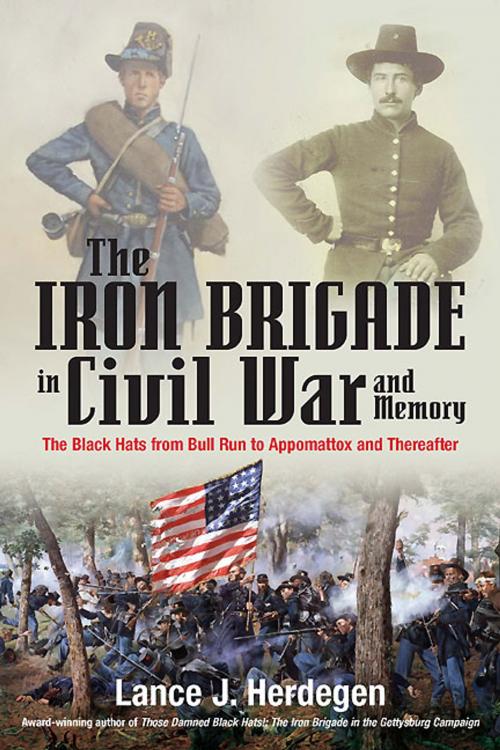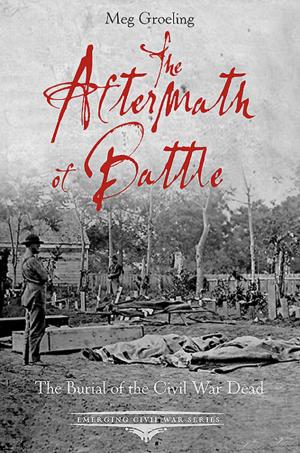The Iron Brigade in Civil War and Memory
The Black Hats from Bull Run to Appomattox and Thereafter
Nonfiction, History, Military, Other, Americas, United States, Civil War Period (1850-1877)| Author: | Lance Herdegen | ISBN: | 9781611211078 |
| Publisher: | Savas Beatie | Publication: | October 1, 2012 |
| Imprint: | Savas Beatie | Language: | English |
| Author: | Lance Herdegen |
| ISBN: | 9781611211078 |
| Publisher: | Savas Beatie |
| Publication: | October 1, 2012 |
| Imprint: | Savas Beatie |
| Language: | English |
Why another book on the Iron Brigade? Because this is really the first book on this storied outfit—and it could not have been written without the lifetime of study undertaken by award-winning author Lance J. Herdegen. More than a standard military account, Herdegen’s latest puts flesh and faces on the men who sat around the campfires, marched through mud and snow and dust, fought to put down the rebellion, and recorded much of what they did and witnessed for posterity.
The Iron Brigade is one of the most celebrated military organizations of the American Civil War. Although primarily known and studied because of its remarkable stand on the first bloody day at Gettysburg, its stellar service during the earliest days of the war and from the Wilderness to Appomattox has been routinely slighted. Herdegen has finally rectified this historical anomaly with his The Iron Brigade in Civil War and Memory. Composed originally of the 2nd, 6th, and 7th Wisconsin, 19th Indiana, and Battery B of the 4th U.S. Artillery, the brigade first attracted attention as the only all-Western organization serving in the Eastern Theater. The Regular Army’s distinctive felt dress hat earned them the nickname “Black Hat Brigade.” The Westerners took part in the fighting at Gainesville (Brawner’s Farm), Second Bull Run, South Mountain (where General McClellan claimed he gave them their famous “Iron Brigade” moniker), and Antietam. Reinforced by the 24th Michigan, the Black Hats fought at Fredericksburg and Chancellorsville. But it was at Gettysburg on July 1 where the brigade immortalized a railroad cut and helped save the high ground west of town that proved decisive, but was nearly destroyed for its brave stand. Reorganizations, expired enlistments, and different duties split up the famous outfit, but some of the regiments fought on through the Wilderness to Petersburg and finally, Appomattox. Only when the war was ended did the Western boys finally go home.
Herdegen’s magnificent The Iron Brigade in Civil War and Memory, sure to be looked upon as his magnum opus, is based on decades of archival research and includes scores of previously unpublished letters, photos, journals, and other primary accounts. This well researched and written tour de force, which includes reunion and memorial coverage until the final expiration of the last surviving member, will be the last word on the Iron Brigade for the foreseeable future.
When we were young, explained one Black Hat veteran many years after the war, we hardly realized that we “had fought on more fields of battle than the Old Guard of Napoleon, and have stood fire in far greater firmness.” Here, at long last, is the full story of how young farm boys, shopkeepers, river men, and piney camp boys in a brigade forged with iron helped save the Union.
About the Author: Award-winning journalist Lance J. Herdegen is the former director of the Institute of Civil War Studies at Carroll University. He previously worked as a reporter and editor for the United Press International (UPI) news service covering national politics and civil rights and presently works as historical consultant for the Civil War Museum of the Upper Middle West. Herdegen is the author of many articles and is regarded around the world as the authority on the Iron Brigade. His many book credits include Those Damned Black Hats!: The Iron Brigade in the Gettysburg Campaign; Four Years with the Iron Brigade: The Civil War Journal of William R. Ray, Seventh Wisconsin Volunteers; The Men Stood Like Iron: How the Iron Brigade Won its Name, and In the Bloody Railroad Cut at Gettysburg.
Why another book on the Iron Brigade? Because this is really the first book on this storied outfit—and it could not have been written without the lifetime of study undertaken by award-winning author Lance J. Herdegen. More than a standard military account, Herdegen’s latest puts flesh and faces on the men who sat around the campfires, marched through mud and snow and dust, fought to put down the rebellion, and recorded much of what they did and witnessed for posterity.
The Iron Brigade is one of the most celebrated military organizations of the American Civil War. Although primarily known and studied because of its remarkable stand on the first bloody day at Gettysburg, its stellar service during the earliest days of the war and from the Wilderness to Appomattox has been routinely slighted. Herdegen has finally rectified this historical anomaly with his The Iron Brigade in Civil War and Memory. Composed originally of the 2nd, 6th, and 7th Wisconsin, 19th Indiana, and Battery B of the 4th U.S. Artillery, the brigade first attracted attention as the only all-Western organization serving in the Eastern Theater. The Regular Army’s distinctive felt dress hat earned them the nickname “Black Hat Brigade.” The Westerners took part in the fighting at Gainesville (Brawner’s Farm), Second Bull Run, South Mountain (where General McClellan claimed he gave them their famous “Iron Brigade” moniker), and Antietam. Reinforced by the 24th Michigan, the Black Hats fought at Fredericksburg and Chancellorsville. But it was at Gettysburg on July 1 where the brigade immortalized a railroad cut and helped save the high ground west of town that proved decisive, but was nearly destroyed for its brave stand. Reorganizations, expired enlistments, and different duties split up the famous outfit, but some of the regiments fought on through the Wilderness to Petersburg and finally, Appomattox. Only when the war was ended did the Western boys finally go home.
Herdegen’s magnificent The Iron Brigade in Civil War and Memory, sure to be looked upon as his magnum opus, is based on decades of archival research and includes scores of previously unpublished letters, photos, journals, and other primary accounts. This well researched and written tour de force, which includes reunion and memorial coverage until the final expiration of the last surviving member, will be the last word on the Iron Brigade for the foreseeable future.
When we were young, explained one Black Hat veteran many years after the war, we hardly realized that we “had fought on more fields of battle than the Old Guard of Napoleon, and have stood fire in far greater firmness.” Here, at long last, is the full story of how young farm boys, shopkeepers, river men, and piney camp boys in a brigade forged with iron helped save the Union.
About the Author: Award-winning journalist Lance J. Herdegen is the former director of the Institute of Civil War Studies at Carroll University. He previously worked as a reporter and editor for the United Press International (UPI) news service covering national politics and civil rights and presently works as historical consultant for the Civil War Museum of the Upper Middle West. Herdegen is the author of many articles and is regarded around the world as the authority on the Iron Brigade. His many book credits include Those Damned Black Hats!: The Iron Brigade in the Gettysburg Campaign; Four Years with the Iron Brigade: The Civil War Journal of William R. Ray, Seventh Wisconsin Volunteers; The Men Stood Like Iron: How the Iron Brigade Won its Name, and In the Bloody Railroad Cut at Gettysburg.















